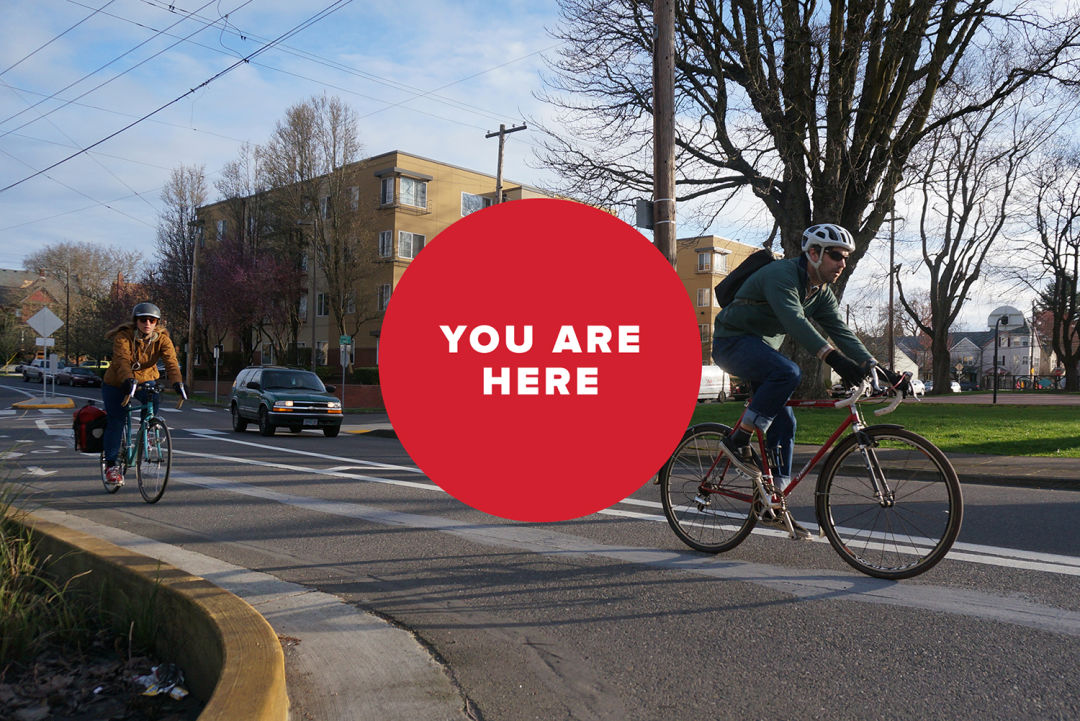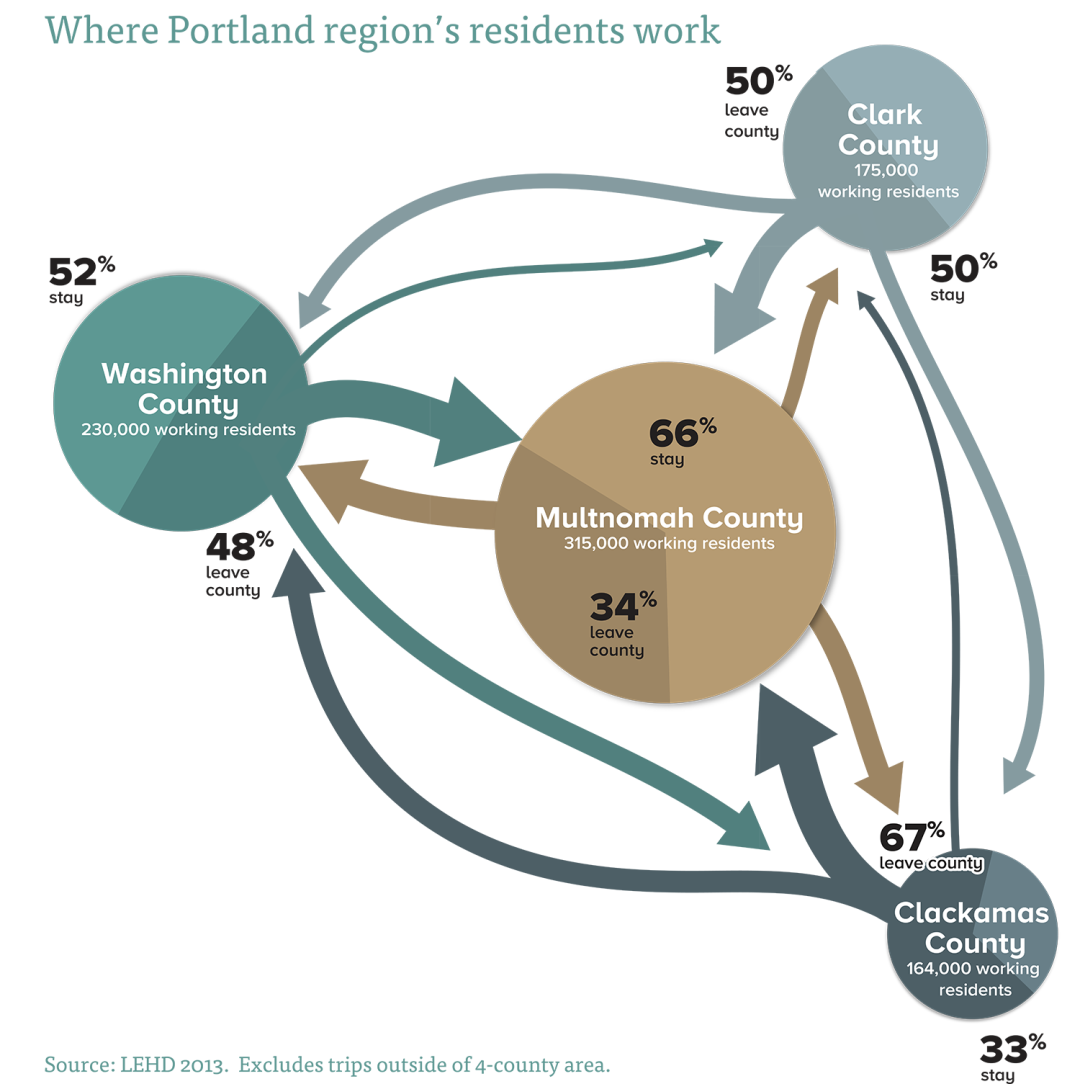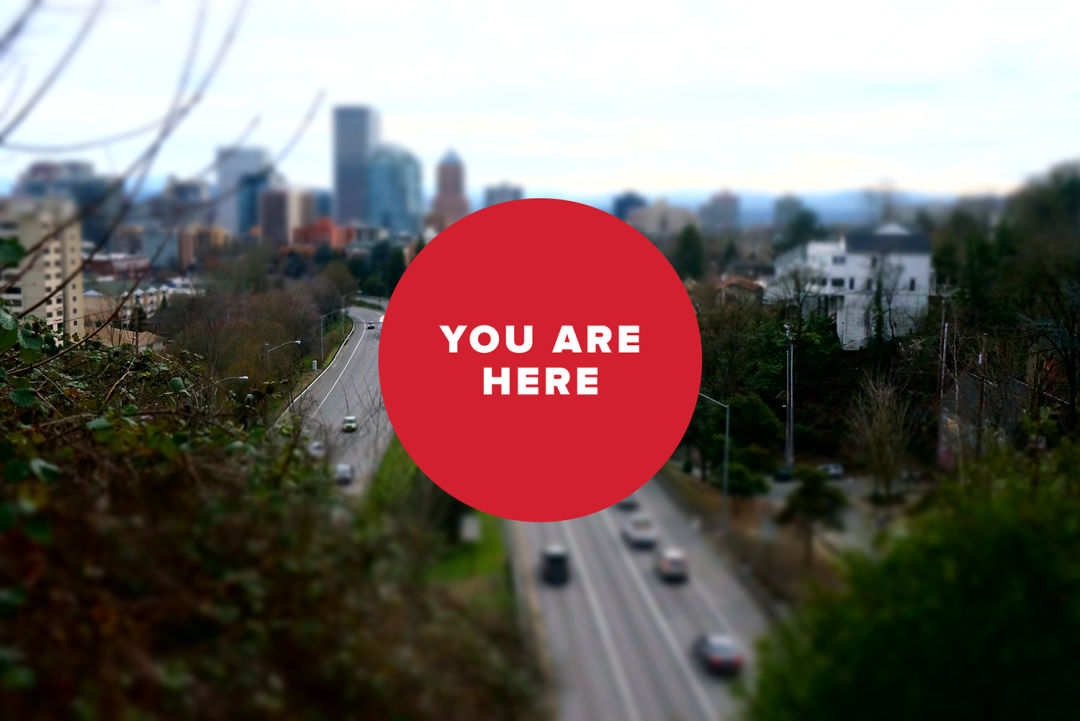8 numbers that define Portland-area transportation

People going places – that's what ties a region together.
Every day, the Portland region's 2.4 million people have places to go – to work or school, to doctors and grocery stores and parks and back home again. And as more people come here, that means more people needing to go more places.
So how well are our roads, transit lines, bikeways and sidewalks keeping up with growth?

Here are some numbers to consider.
$11,683: How much the average Portland region household spends on transportation every year – about 20 percent of what the average household earns. But that can vary widely depending on where you live and how you get around. People living in compact neighborhoods can spend as little as 9 percent of their income on getting around. Unfortunately, some of the region's residents who most need affordable transportation options live in neighborhoods where those options are hardest to find.
1995: The year per-capita driving peaked in the Portland region. Residents of the region are driving less than they did 20 years ago and less than residents of other metro areas. That's thanks in part to a history of planning to keep housing closer to jobs and services. People here also use other options like transit, biking and walking more often.
26 minutes: The average commute in the Portland region in 2014. Nearly two-thirds of the region's residents have a 30-minute commute or faster, the fifth-best rate among major US metro areas. The average commute in the region is about 7.1 miles – considerably shorter than most metro areas.
34,000 cars: The region is growing and so is congestion – 120,000 more people are working in the region than in 2000. But it could be worse. If commuters drove at the same rate now as we did then, we'd see 34,000 more cars commuting every day. That's like packing three lanes of I-5 all the way to Woodburn. Working from home has helped keep more cars off the road than any other way of getting to work, though bicycling is close behind.
9 percent: The growth in weekday ridership on the region's four largest transit agencies over the last 10 years. In 2014, people in the Portland region took more than 103 million rides on transit. MAX light rail carries about two-fifths of those trips. The busiest MAX line, the Gresham-to-Hillsboro Blue Line carries almost 60,000 people daily – enough to fill the Moda Center three times.
55 percent: The increase in the value of commercial goods exported from the region from 2007 to 2012. That's despite a 44 percent drop in the total weight of goods we're exporting. Why? Because the freight economy is shifting to higher-value products like microchips, which don't weigh as much.
23 minutes: How frequently, on average, a crash happened in the Portland region in 2014 – which saw 23,300 total crashes. Fortunately, 98 percent of crashes result in only minor injuries or property damage – but every crash disrupts people's lives and the reliability of our system.
48 percent: The share of fatal crashes that involve a person walking or bicycling. That's despite just 6 percent of total crashes involving such individuals, showing just how vulnerable people can be when walking or bicycling.

Learn more
What's getting around like for you? Get more stats, personal stories and insight into the Portland region's transportation system.
